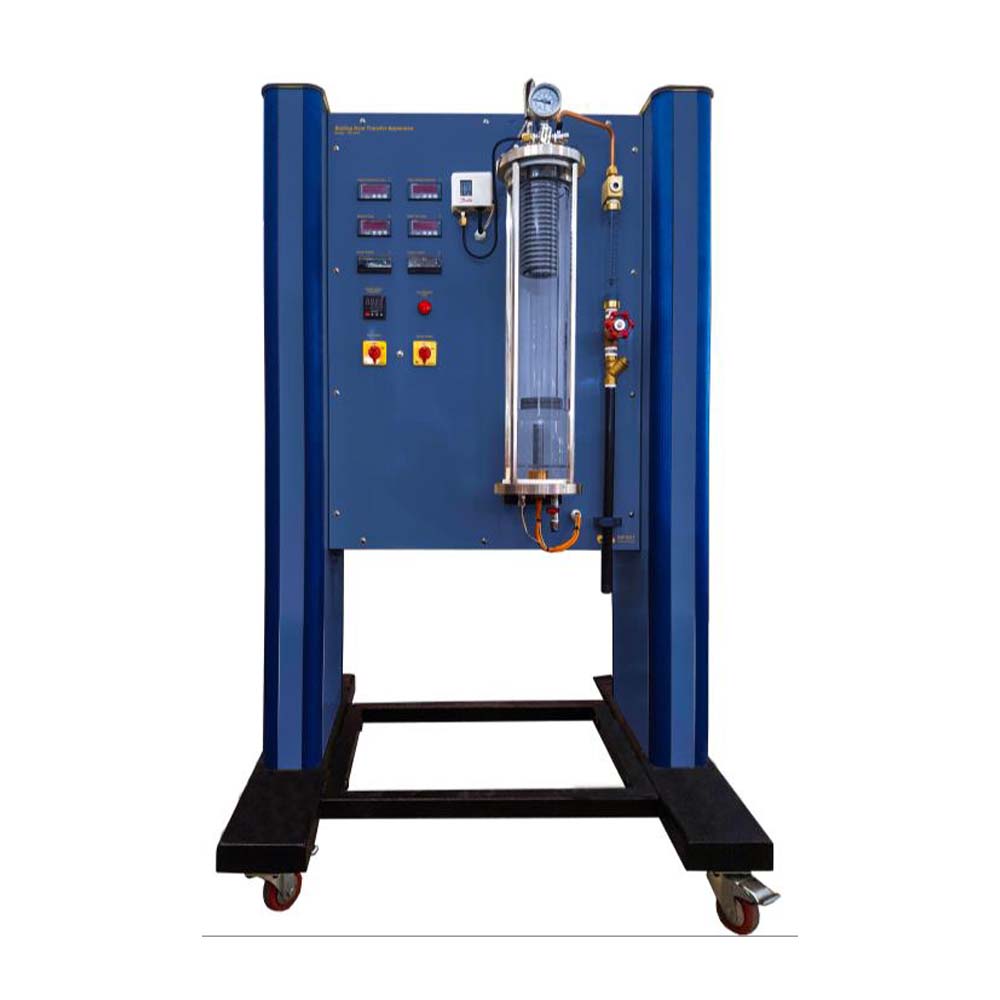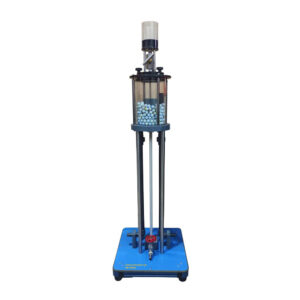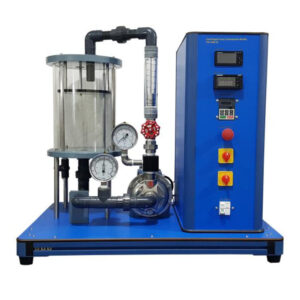Heat transfer is one of the core courses of engineering science. The three primary modes of heat transfer are conduction, convection & radiation. Boiling Heat Transfer has a wide range of industrial application such as in boilers & evaporation. The unit allows the students to visualize and quality different modes of boiling heat transfer. Experimental measurements are used for estimating the boiling heat transfer coefficient at varying heat flux and in the presence or absence of stirring. The unit Boiling Heat transfer consists of a high strength thermal shock proof glass cylinder enclosed at top & bottom. At the bottom of tank is a small heating cylinder immersed in a volatile solvent that boils at low pressure. A water cooled condenser present at the top of cylinder for condensation. Sensors are provided for measurement of temperature, pressure, cooling water flow rate & input power.
Boiling
During the production of vapour bubbles, due to surface tension, the vapour inside a bubble must be at a higher pressure than the surrounding liquid. The pressure difference increases as the diameter of the bubble decreases and is insignificant when the bubble is large. However, when the bubble is minute, an appreciable pressure difference exists. The pressure inside a bubble is the vapour pressure corresponding with the temperature of the surrounding liquid. Thus, when no bubbles exist, or when they are very small, it is possible for the liquid temperature in the region of the heat transfer surface to be well above the temperature of the bulk of the liquid.
Convective Boiling
When the heating surface temperature is slightly hotter than the saturation temperature of the liquid, the excess vapour pressure is unlikely to produce bubbles. The locally warmed liquid expands and convection currents carry it to the liquid-vapour interface where evaporation takes place and thermal equilibrium is restored. Thus, in this mode, evaporation takes place at small temperature differences and with no bubble formation.
Nucleate Boiling
As the surface becomes hotter, the excess of vapour pressure over local liquid pressure increases and eventually bubbles are formed. These occur at nucleating points on the hot surface where minute gas pockets, existing in surface defects form the nucleus for the formation of a bubble. As soon as a bubble is formed, it expands rapidly as the warmed liquid evaporates into it. The buoyancy detaches the bubble from the surface and another starts to form. Nucleate boiling is characterised by vigorous bubble formatic and turbulence. Exceptionally high heat transfer rates and heat transfer coefficients with moderate temperature differences occur in nucleate boiling, and in practical applications boiling is nearly always in this mode.
Film Boiling
As the heating surface temperature rises the rate of production of vapour bubbles becomes so high that eventually the surface becomes enveloped in a blanket or film of vapour which prevents the liquid from wetting the surface. When this happens, the insulating effect of the film greatly reduces the rate of heat transfer. Unless the heat input is correspondingly reduced, the heating surface temperature will rise until by a combination of radiation and convection the temperature difference is sufficient to drive the heat through the resistance offered by the vapour film. Frequently a metallurgical or other failure will occur before the new equilibrium condition is reached and for this reason the condition where film boiling is just established is often called “Burn Out”.




